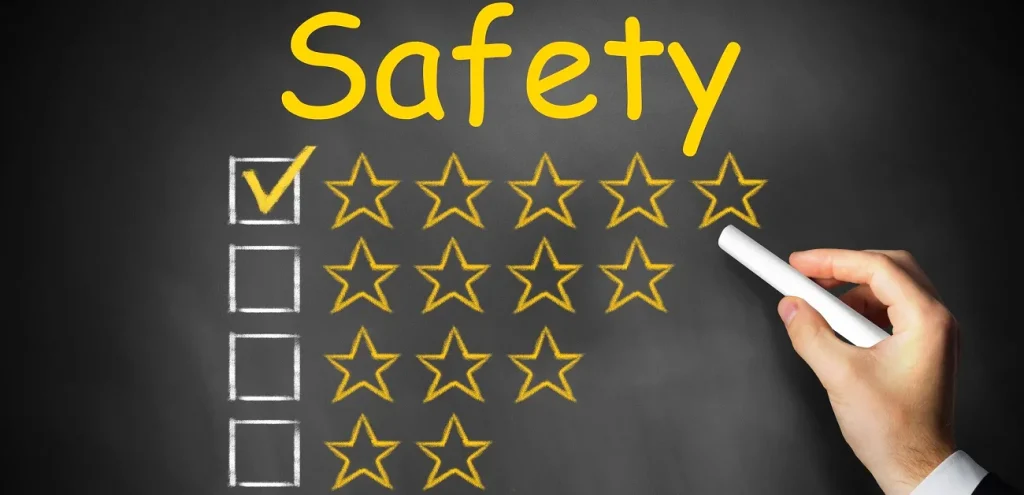When it comes to live events, creating an unforgettable experience is the goal. However, ensuring the safety of everyone involved is paramount. Safety is not just about compliance with regulations; it is about protecting attendees, staff, and performers from potential hazards. As live events grow in scale and complexity, safety becomes even more critical. In this blog post, we’ll explore best practices for organizing safe live events and offer insights that you may not have considered.

Understanding the Basics of Event Safety
At the foundation of any successful event is a well-structured safety plan. This plan should cover everything from crowd management to emergency procedures. Before diving into the specifics, it’s important to understand the basics:
Risk Assessment: Conduct a thorough risk assessment to identify potential hazards. This includes evaluating the venue, event activities, and audience behavior. Understanding the risks allows you to take proactive measures to mitigate them.
Compliance with Regulations: Ensure your event complies with all local, state, and federal safety regulations. This may include obtaining permits, adhering to fire codes, and following health and safety guidelines.
Insurance Coverage: Secure appropriate insurance coverage to protect against unforeseen incidents. This can include liability insurance, property damage coverage, and event cancellation insurance.
Best Practices for Crowd Management
Managing large crowds is one of the biggest challenges in event safety. A well-organized crowd management plan can prevent accidents and ensure a smooth flow of people:
Venue Layout: Design the venue layout to allow easy movement and clear sightlines. Ensure there are no bottlenecks that could cause crowd congestion.
Clear Signage: Use clear, visible signage to direct attendees to exits, restrooms, and other important areas. Signage should be easily understandable by everyone, including non-English speakers.
Staff Training: Train your staff to handle crowd control effectively. They should be familiar with the venue layout, emergency exits, and communication protocols. Equip them with two-way radios for real-time coordination.
Controlled Entry and Exit Points: Manage entry and exit points to prevent overcrowding. Use barriers and security personnel to guide the flow of attendees.
Preparing for Emergencies
Emergencies can happen at any time. Being prepared is essential to minimizing their impact:
Emergency Plan: Develop a comprehensive emergency plan that covers various scenarios, such as fire, medical emergencies, or severe weather. Ensure all staff members are trained on this plan.
Emergency Exits: Clearly mark all emergency exits and ensure they are unobstructed. Conduct regular checks to confirm they are functioning properly.
First Aid Stations: Set up first aid stations in easily accessible locations. Ensure they are staffed with trained medical personnel and equipped with necessary supplies.
Communication Protocols: Establish clear communication protocols for emergencies. Designate a point person to coordinate with emergency services and keep attendees informed.

Special Effects and Technology Safety
Special effects and advanced technology add excitement to live events, but they also come with risks. Here’s how to use them safely:
Qualified Technicians: Hire qualified technicians to set up and operate special effects equipment. They should be experienced in managing the specific effects being used, whether it’s pyrotechnics, lasers, or fog machines.
Safety Zones: Establish safety zones around areas where special effects are being used. Keep attendees at a safe distance to prevent accidents.
Regular Inspections: Conduct regular inspections of all equipment before and during the event. Check for any signs of wear or malfunction that could pose a safety risk.
Clear Instructions: Provide clear instructions to performers and staff on how to interact with special effects. Ensure they understand the risks and safety protocols.
Enhancing Security Measures
Security is a key component of event safety. Protecting attendees from external threats is just as important as managing internal risks:
Security Personnel: Hire professional security personnel to monitor the event. They should be trained in crowd control, emergency response, and conflict resolution.
Bag Checks and Metal Detectors: Implement bag checks and metal detectors at entry points to prevent prohibited items from entering the venue.
Surveillance: Use surveillance cameras to monitor key areas of the venue. This can help identify potential security threats before they escalate.
Incident Reporting: Set up a system for reporting and documenting incidents. This allows for quick response and helps improve safety protocols for future events.
Conclusion
Safety should never be an afterthought when planning a live event. By implementing these best practices, you can create a secure environment where everyone can enjoy the experience without worry. From crowd management to emergency preparedness, each element plays a crucial role in ensuring your event runs smoothly. Remember, a safe event is a successful event. Take the time to plan thoroughly and prioritize safety at every stage of your event planning process.


